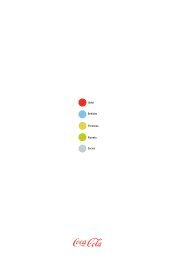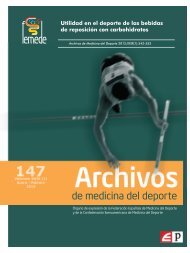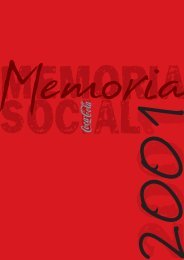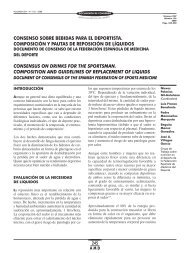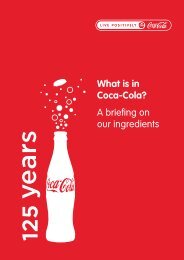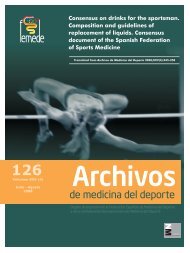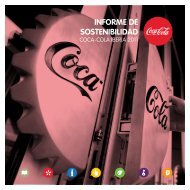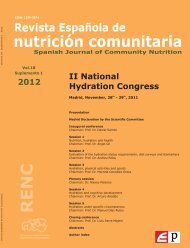athletes' medical information - Coca-Cola
athletes' medical information - Coca-Cola
athletes' medical information - Coca-Cola
Create successful ePaper yourself
Turn your PDF publications into a flip-book with our unique Google optimized e-Paper software.
athletes’ <strong>medical</strong> <strong>information</strong><br />
Eating in a Paralympic<br />
Village dining hall<br />
Imagine being able to eat in a self-serve<br />
restaurant that is open 24/7, has an almost<br />
unlimited menu from international cuisines, has<br />
input from some of the best caterers and sports<br />
nutrition experts in the world, and is free! How<br />
could you go wrong?<br />
Unfortunately, although the Paralympic<br />
Village dining hall provides a benchmark in<br />
catering for athletes and is a memorable<br />
experience for many Paralympians, some of<br />
those memories may be of lost opportunities<br />
and poor nutrition outcomes rather than the<br />
opposite. Some athletes fail to achieve the<br />
potential of the dining experience and adopt<br />
poor nutrition practices at a critical time in their<br />
sporting careers. The fault is not the dining hall<br />
itself, but the failure of some athletes to<br />
recognise and respond to the challenges of this<br />
new eating environment.<br />
A sudden switch to communal cafeteriastyle<br />
eating creates the following issues that<br />
may be new to many athletes:<br />
Great quantities and many different choices<br />
of food. Many athletes are not used to this<br />
almost unlimited access to so many wonderful<br />
foods. The temptations and opportunities to<br />
overeat can be so overwhelming that they<br />
become a major reason for weight gain.<br />
Different and unusual foods. Although the<br />
menu includes cuisine from around the world,<br />
inevitably some athletes find themselves<br />
without access to their favourite foods or<br />
important menu items in their usual competition<br />
repertoire. The athlete may be reluctant to try<br />
new things, finding themselves unable to eat<br />
enough food or their special nutritional<br />
requirements for competition preparation and<br />
recovery.<br />
Food boredom. Many athletes live in the<br />
Paralympic- Village for more than two weeks.<br />
Although this is an exciting period, for the<br />
athlete who is training through to competition<br />
on the last days of the Games, the daily routine<br />
can lose its novelty surprisingly quickly. Even<br />
though more choice is offered than most people<br />
ever see in their normal lives, the “sameness”<br />
of the environment and of repetitive eating<br />
habits can become boring. It doesn’t help if the<br />
athlete has developed the practice of piling a<br />
“bit of everything” on their plates at each meal<br />
so that there is no new theme or change of<br />
menu. Strangely enough, some athletes who<br />
are surrounded by fantastic food can become<br />
disinterested in eating and find meal times<br />
a chore.<br />
Lack of knowledge of the nutritional<br />
characteristics of Dining Hall choices. Many<br />
athletes don’t read English or have a huge<br />
knowledge of food from outside their region.<br />
They may find it hard to understand what is on<br />
offer in the Dining Hall or how to make good<br />
choices.<br />
Lack of understanding of how to meet<br />
special food needs. Athletes with food<br />
intolerances and allergies may not be confident<br />
of finding foods that meet their dietary<br />
restrictions.<br />
44<br />
12-113-COC_Paralymics_Booklet_20120718.indd 44<br />
7/18/12 4:29 PM





